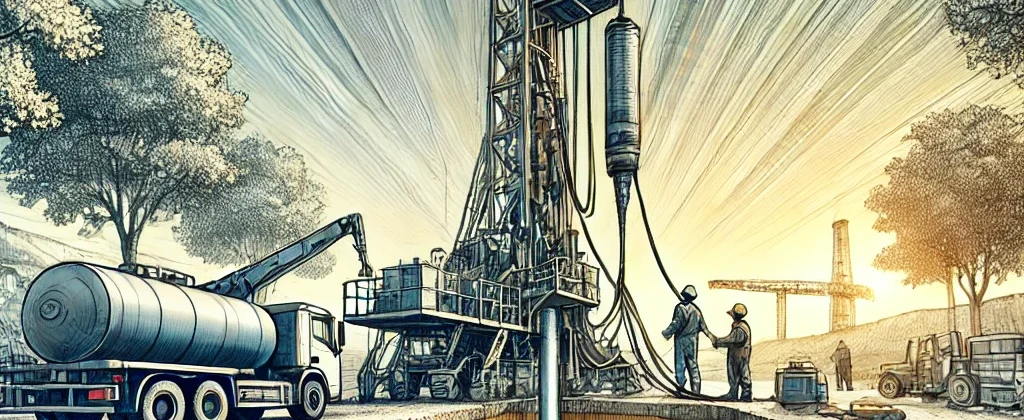Water drilling is essential for accessing underground water resources. It supports residential, agricultural, and industrial needs. Understanding the process is vital for ensuring success. This guide explains the steps, techniques, and expert tips for water drilling.
What Is Water Drilling?
Water drilling involves creating a borehole to access underground water. The borehole acts as a well, providing a steady water supply. Professionals use specialized tools and techniques to ensure accuracy and safety.
For expert water drilling services, visit mackinnonwatersundridge.com/. They provide professional solutions for a variety of water needs.
The Importance of Water Drilling
Accessing groundwater is crucial for areas lacking surface water. It ensures a reliable supply for drinking, irrigation, and industrial processes. Proper drilling techniques protect water quality and minimize environmental impact.
Benefits of Groundwater Access
- Provides a dependable water source year-round.
- Supports agricultural and landscaping needs.
- Reduces dependency on municipal water supplies.
The Water Drilling Process: Step-by-Step
The water drilling process involves several stages. Each step is critical to ensure a safe and efficient borehole. Here’s a breakdown:
1. Site Assessment
Before drilling, experts assess the site. They analyze the geology, water table depth, and soil conditions. This step helps determine the best drilling method and location.
2. Drilling Preparation
Preparation involves clearing the site and assembling equipment. Safety measures are established to protect workers and the environment. Specialized rigs and tools are brought in based on site requirements.
3. Drilling the Borehole
The borehole is drilled using advanced machinery. The most common methods include:
- Rotary Drilling: Uses a rotating drill bit to cut through soil and rock.
- Percussion Drilling: Involves dropping a heavy tool to break rock layers.
- Auger Drilling: Suitable for softer soil, using a helical screw to excavate.
The drilling process continues until reaching the desired aquifer. The depth varies based on water table levels and geological conditions.
4. Casing Installation
A casing is installed to stabilize the borehole. It prevents soil collapse and protects the water supply. The casing is typically made of steel or PVC, ensuring durability and safety.
5. Grouting
Grouting involves sealing the space between the casing and borehole wall. This step prevents surface contaminants from entering the well. Cement or bentonite clay is often used as a sealant.
6. Pump Installation
Once the well is complete, a pump is installed. The pump extracts water from the aquifer and delivers it to the surface. Selecting the right pump is crucial for efficiency and longevity.
7. Water Testing and Maintenance
After installation, the water is tested for quality. Regular maintenance ensures the well continues to function effectively. Experts recommend annual inspections and prompt repairs for any issues.
Challenges in Water Drilling
Water drilling can face several challenges. Understanding these helps professionals plan and adapt:
- Unstable Soil: Certain soil types may collapse, requiring additional support.
- Deep Water Tables: Deeper drilling increases costs and complexity.
- Contamination Risks: Poor drilling practices can lead to groundwater contamination.
Expert Tips for Successful Water Drilling
Industry experts share these tips for successful water drilling:
- Always conduct a thorough site analysis before drilling.
- Use experienced professionals with proper certifications.
- Choose the right drilling method based on site conditions.
- Ensure proper sealing to protect water quality.
- Schedule regular maintenance to extend the well’s lifespan.
The Role of Technology in Water Drilling
Advancements in technology have improved water drilling techniques. Modern rigs and tools offer precision and efficiency. Innovations such as GPS mapping and real-time monitoring streamline the process.
Sustainable Practices in Water Drilling
Environmental sustainability is a priority in water drilling. Professionals adopt practices that minimize impact, such as reusing drilling fluids and reducing waste. Sustainable methods ensure long-term water availability.
Why Choose Professionals for Water Drilling?
Water drilling requires expertise and precision. Hiring professionals ensures compliance with regulations and access to high-quality equipment. Experienced teams also address challenges effectively, saving time and resources.
Final Thoughts
Water drilling is a critical process for accessing underground water resources. From site assessment to pump installation, each step requires skill and precision. Partnering with experienced professionals ensures reliable results.
Understanding the process empowers you to make informed decisions. Whether for residential or agricultural needs, a well-planned drilling project guarantees success.


